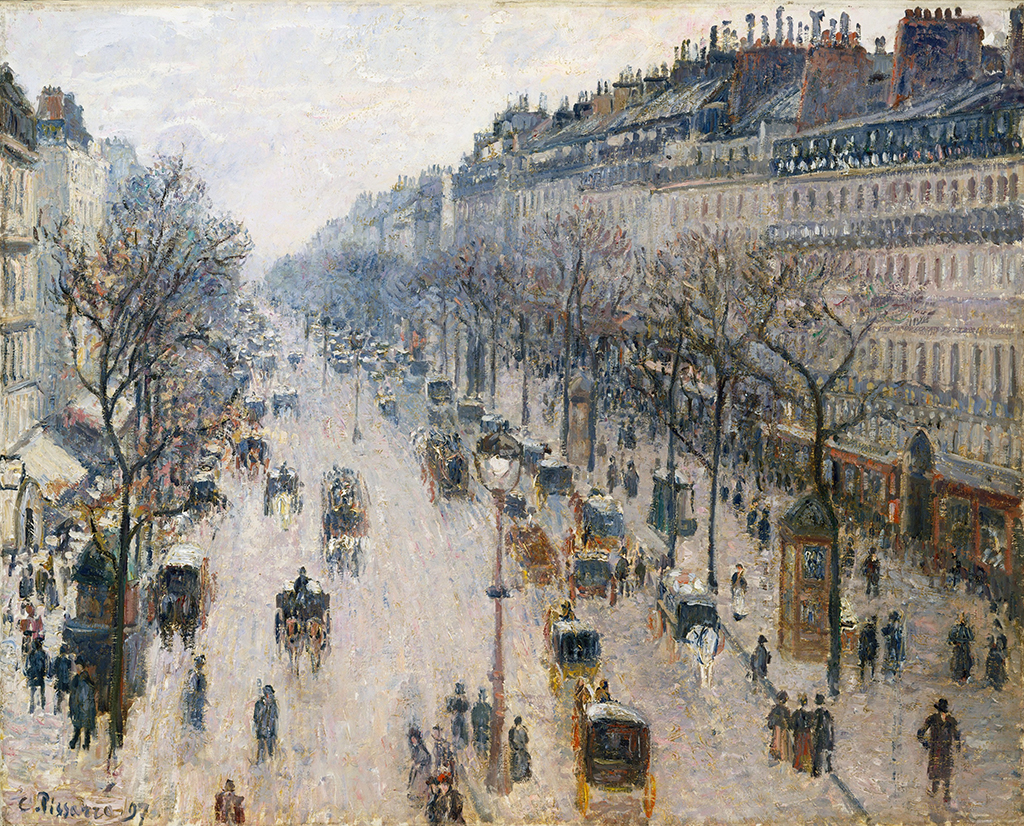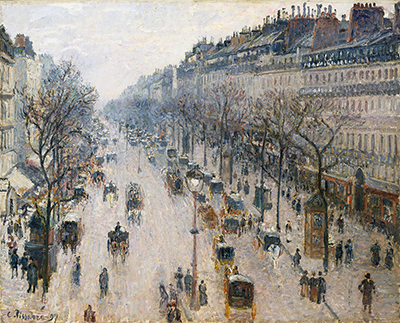The Boulevard Montmartre on a Winter Morning is a time capsule that preserves the newfound liveliness that cities boasted at the dawn of the 20th century.
Inspired by Monet's Poplars, Pissarro decides to portray several paintings of one location during different times and conditions, believing this would pique art dealers' interests. Thus, the Boulevard Montmartre paintings were born. At this stage, Pissarro’s subject matter shifts from the peaceful countryside to urban centres, which are rapidly increasing in population due to the Industrial Revolution.
The artist's vantage point is that of the aforementioned busy Parisian boulevard from an upper floor of his hotel room. As the painting's title states, it shows a winter morning. The people portrayed seem to move in and out of the picture due to its open composition - the world inside the painting doesn't end at its frames, but instead carries on indefinitely, only a fraction of it captured by the artist.
Although painted in the later stages of the Impressionism period, it perfectly reflects the ideas and virtues of the era. Along with the buildings, cars, and people, the atmosphere and lighting are also tangible aspects of the piece. Rather than use clear lines, Pissarro uses colour theory to create a sense of distance. Different colours can have different effects in terms of space. Light or cool nuances, for instance, make an object appear further away, while dark or warm ones make the same object appear closer.
The artist adjusts colours to define contours, once again choosing to neglect harsh, visible lines. Clear shapes dampen the illusion of a building's subtle disappearance beyond eye's reach, and in turn kill a part of the realism and immersion. Camille Pissarro strives to portray life as it unfolds before him — hectic, fluid, always in motion. Impressionism is often described as a fleeting glance at life, as opposed to a detailed portrayal. Done are the times of still portraits or epic historical scenes. Impressionists work with the typical.
Since life is dynamic, painters have to work quickly. Attention to detail makes room for a style that would allow an artist to capture the fluidity of a scene. Pissarro's own opinion was that everything should be painted at once, under frequent observations; refinements should be gradual and incremental. The Boulevard Montmartre on a Winter Morning is a staple of that style, showing the rapid, short brush strokes that Pissarro used to capture that Parisian morning and give the impression of a world perpetually in motion. The artist makes no effort to hide imperfect strokes on his canvas, therefore adding to the fluidity, distance, and truth of his masterpiece.





